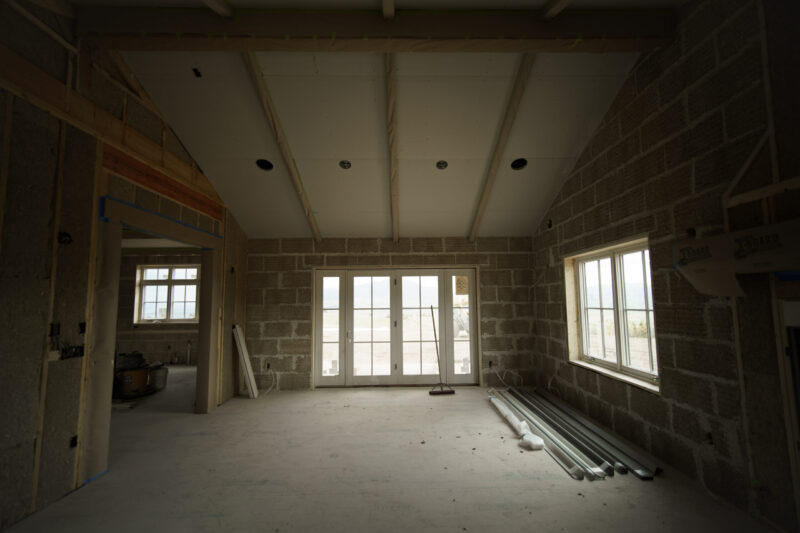Hemp is well known as a multi-purpose plant, but it is often underestimated as one of the most versatile natural materials available. It possesses some of the strongest natural fibers of any botanical, which is why it has been used by civilizations throughout history to make rope, paper, and clothing.
In recent years, hemp has been utilized to extract non-psychoactive but physiologically beneficial natural chemicals such as CBD and other cannabinoids. The high yield and short cultivation time of hemp plants have also led to the versatile plant being preferred to wood in many industries.
Smarter Materials
Because of hemp’s strength and short harvest time, “hempcrete” is now replacing concrete in many homes. Hempcrete is a brick alternative that combines hemp hurd — the material found inside of the plant’s stalk — and lime. The lime acts as a glue or binder that holds the dry fibrous hurd pulp together in a process known as bonded cellulose insulation. The result is a solid, sustainable building material that is six to eight times lighter than concrete.
“Hempcrete houses are more simple to build than conventional ones,” veteran hempcrete mason Anthony Néron said. It may be a simple process, but, as the age-old maxim states, the simple answer is usually the correct one. Hempcrete houses require no gypsum, no vapor barrier, and no plastic in the walls. This means building a hempcrete house is not only environmentally friendly, but it is also worker-friendly. No toxic chemicals are used in the building process and on-the-job accidents are drastically reduced.
A Smarter Home
The building costs of hempcrete are 20 to 30% higher on average than conventional brick, wood, plaster, or concrete, but the benefits outweigh the costs in a short time. Hempcrete blocks create a regulator wall that saves homeowners thousands per year in energy costs while having the added benefit of increased sustainability. The walls regulate temperature and humidity by dispersing heat throughout the thick, porous blocks. Think heated walls without the environmental impact and financial woes associated with them.
A Smarter World
While the innovative properties of hempcrete are useful for homeowners, what makes it a truly revolutionary material is that it catches more greenhouse gases than will be produced during the harvesting process.
Most of the mass of hemp is carbon. Like all plants, hemp takes in carbon dioxide and releases oxygen, retaining the pure carbon within its body. This means that the carbon the plant takes in is not being released back into the atmosphere, resulting in a net negative carbon footprint.
Until recently, building hempcrete houses required the aid of highly skilled masons who are familiar with the material. Now, hemp industry leaders are working toward a more scalable model, introducing pre-mixed blocks to the market that can be easily integrated into the construction industry. The petroleum industry still has a vested interest in the construction market, but hempcrete pioneers could be the “small ax that cuts down the big tree,” according to Néron.
Author
-

Aron Vaughan is a journalist, essayist, author, screenwriter, and editor based in Vero Beach, Florida. A cannabis activist and tech enthusiast, he takes great pride in bringing cutting edge content on these topics to the readers of Cannabis & Tech Today. See his features in Innovation & Tech Today, TechnologyAdvice, Armchair Rockstar, and biaskllr.







